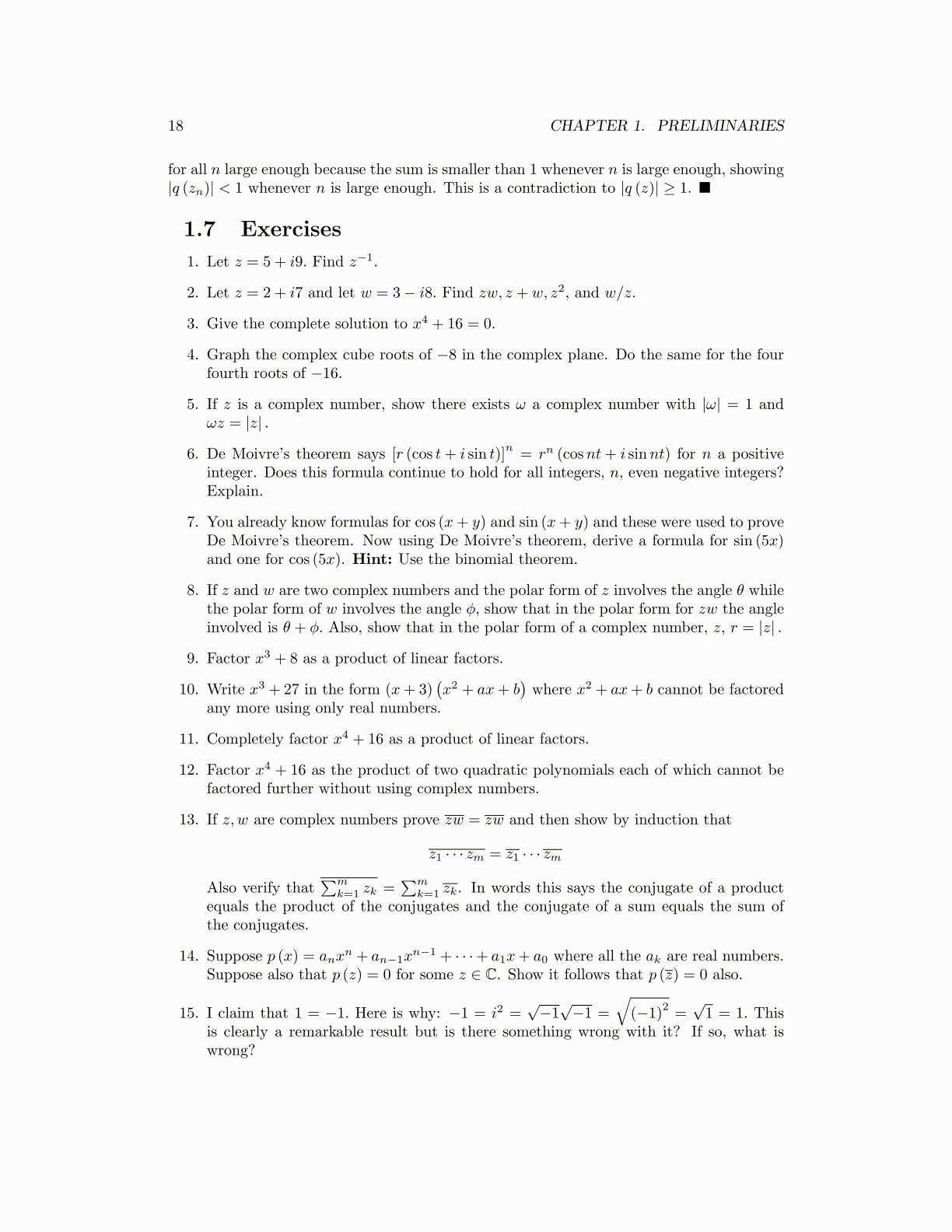
18 CHAPTER 1. PRELIMINARIES
for all n large enough because the sum is smaller than 1 whenever n is large enough, showing|q (zn)| < 1 whenever n is large enough. This is a contradiction to |q (z)| ≥ 1. ■
1.7 Exercises
1. Let z = 5 + i9. Find z−1.
2. Let z = 2 + i7 and let w = 3− i8. Find zw, z + w, z2, and w/z.
3. Give the complete solution to x4 + 16 = 0.
4. Graph the complex cube roots of −8 in the complex plane. Do the same for the fourfourth roots of −16.
5. If z is a complex number, show there exists ω a complex number with |ω| = 1 andωz = |z| .
6. De Moivre’s theorem says [r (cos t+ i sin t)]n= rn (cosnt+ i sinnt) for n a positive
integer. Does this formula continue to hold for all integers, n, even negative integers?Explain.
7. You already know formulas for cos (x+ y) and sin (x+ y) and these were used to proveDe Moivre’s theorem. Now using De Moivre’s theorem, derive a formula for sin (5x)and one for cos (5x). Hint: Use the binomial theorem.
8. If z and w are two complex numbers and the polar form of z involves the angle θ whilethe polar form of w involves the angle ϕ, show that in the polar form for zw the angleinvolved is θ + ϕ. Also, show that in the polar form of a complex number, z, r = |z| .
9. Factor x3 + 8 as a product of linear factors.
10. Write x3 + 27 in the form (x+ 3)(x2 + ax+ b
)where x2 + ax+ b cannot be factored
any more using only real numbers.
11. Completely factor x4 + 16 as a product of linear factors.
12. Factor x4 + 16 as the product of two quadratic polynomials each of which cannot befactored further without using complex numbers.
13. If z, w are complex numbers prove zw = zw and then show by induction that
z1 · · · zm = z1 · · · zm
Also verify that∑m
k=1 zk =∑m
k=1 zk. In words this says the conjugate of a productequals the product of the conjugates and the conjugate of a sum equals the sum ofthe conjugates.
14. Suppose p (x) = anxn + an−1x
n−1 + · · ·+ a1x+ a0 where all the ak are real numbers.Suppose also that p (z) = 0 for some z ∈ C. Show it follows that p (z) = 0 also.
15. I claim that 1 = −1. Here is why: −1 = i2 =√−1
√−1 =
√(−1)
2=
√1 = 1. This
is clearly a remarkable result but is there something wrong with it? If so, what iswrong?